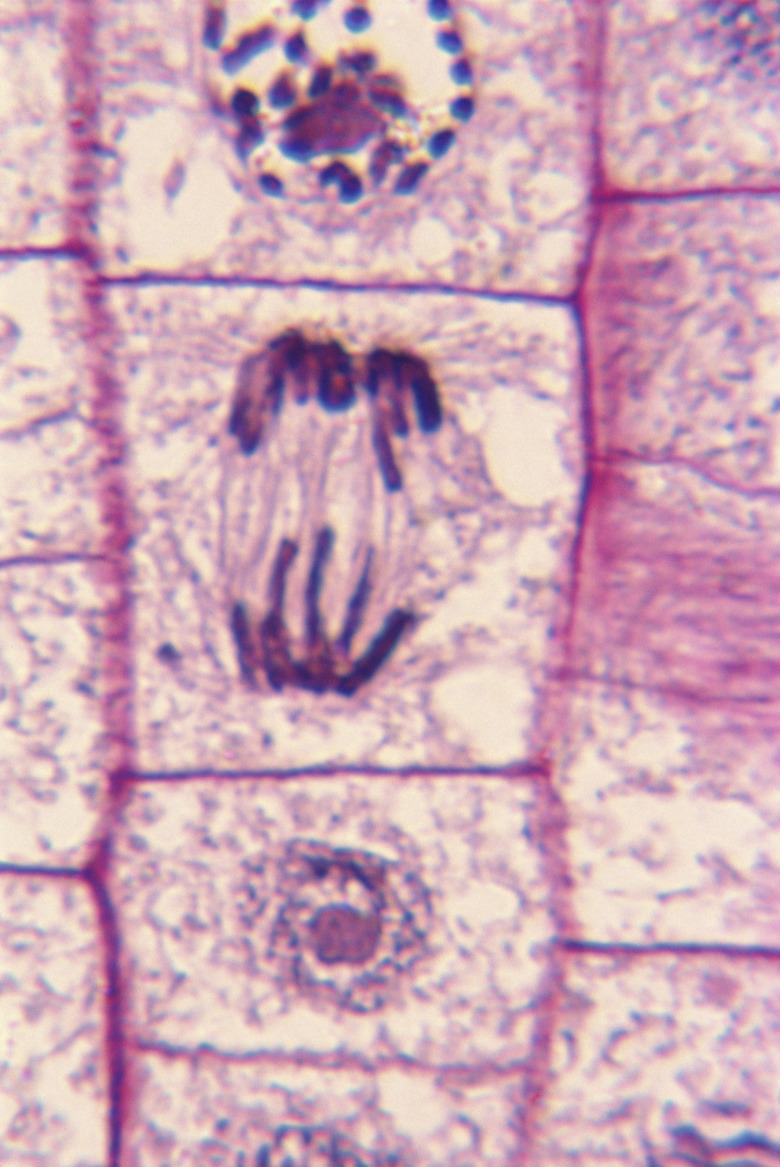The Genetic Structure Located Within The Nucleus Of Each Cell
The nucleus of a cell houses the cell's DNA, which is in the form of chromosomes. However, chromosomes take on different shapes depending on what the cell is doing. DNA is the genetic material in the nucleus, but chromosomes are made of more than just DNA. Chromosomes result when DNA is wrapped around certain proteins and then packaged into thicker fibers by other types of proteins. These proteins pack and unpack DNA based on whether the cell is trying to read the instructions in DNA to make new proteins or just move the chromosomes without breaking them.
Cell Cycle and Mitosis
Cell Cycle and Mitosis
A cell can exist in different phases of what is called the cell cycle. The cell cycle has two main phases, interphase and mitosis. During interphase, DNA is packaged as long, thin fibers. During mitosis, the DNA is packaged as short, thick finger-like structures. Interphase is the preparation phase during which the instruction in DNA is read to make new proteins. It is also the phase during which a cell makes a copy of its DNA. The events that take place during interphase are in preparation for cell division, or mitosis. Mitosis is the phase in which a cell splits into two cells, evenly dividing its DNA.
Condensed Chromosomes
Condensed Chromosomes
During mitosis, the chromosomes are said to be condensed, meaning the DNA is tightly packed by proteins into thick structures. In humans, condensed chromosomes look like thick Xs. Before mitosis begins, the cell has already made new copies of each of its chromosomes. However, these new copies remain attached to the original chromosome. A dividing cell must be able to pull the copied chromosomes apart from the original copies, which is how the DNA is evenly divided when one cell splits into two. Condensed chromosomes are easier to move within a cell without breaking the DNA.
Diffuse Chromosomes
Diffuse Chromosomes
During interphase, chromosomes don't need to be tightly packed since they will be physically pulled here and there. Under these circumstances, the chromosomes are unpacked into long, thin strings of DNA wrapped around proteins called histones. The advantage of unpacking DNA to this extent is that the proteins that read the instructions in DNA have room to grab onto the DNA. Once they physically sit on DNA, they pry open the DNA and make a copy of the information in DNA into a type of molecule called messenger RNA (mRNA).
The Nucleolus
The Nucleolus
The nucleus contains DNA, which carries the genetic information to make the protein machines of a cell. However, the nucleus also contains something called the nucleolus, which is the largest structure in the cell nucleus. Like chromosomes, the nucleolus contains genetic information. However, the DNA molecules in the nucleolus do not carry information to make proteins, but to make what is called ribosomal RNA. Ribosomes are hybrid machines that are made of both proteins and RNA. The instructions to make the RNA in ribosomes are carried by DNA that is in the nucleolus.
Cite This Article
MLA
Ph.D., David H. Nguyen,. "The Genetic Structure Located Within The Nucleus Of Each Cell" sciencing.com, https://www.sciencing.com/the-genetic-structure-located-within-the-nucleus-of-each-cell-12731779/. 23 February 2014.
APA
Ph.D., David H. Nguyen,. (2014, February 23). The Genetic Structure Located Within The Nucleus Of Each Cell. sciencing.com. Retrieved from https://www.sciencing.com/the-genetic-structure-located-within-the-nucleus-of-each-cell-12731779/
Chicago
Ph.D., David H. Nguyen,. The Genetic Structure Located Within The Nucleus Of Each Cell last modified August 30, 2022. https://www.sciencing.com/the-genetic-structure-located-within-the-nucleus-of-each-cell-12731779/
